(Xanthan Gum FREE)
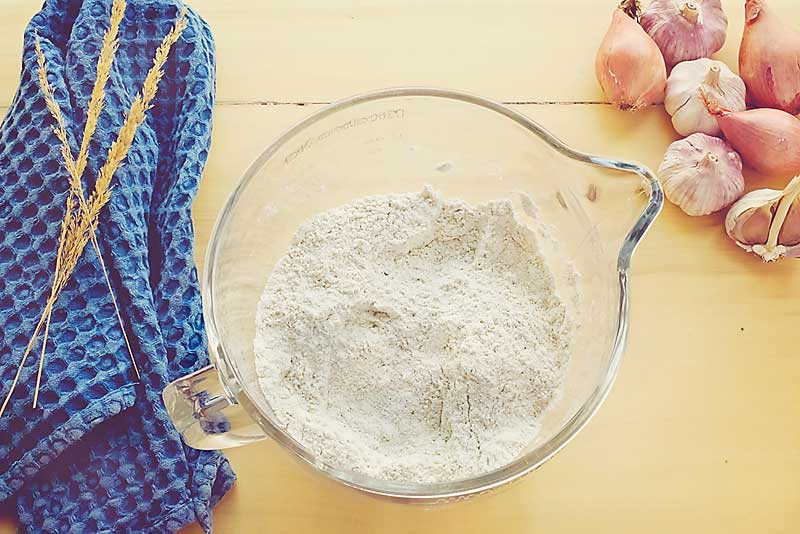
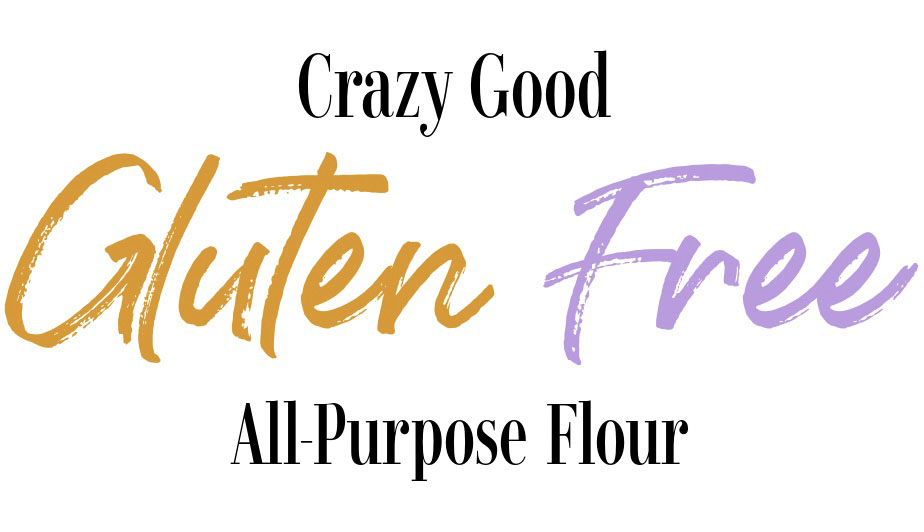
It’s easy, I PROMISE!
I promise it is SUPER easy to create your own Gluten-Free Blend! Please believe me when I say you’ll be SO very glad you did! This blend is closest in composition to the Bob’s Red Mill 1:1 Flour Blend (the blue bag).
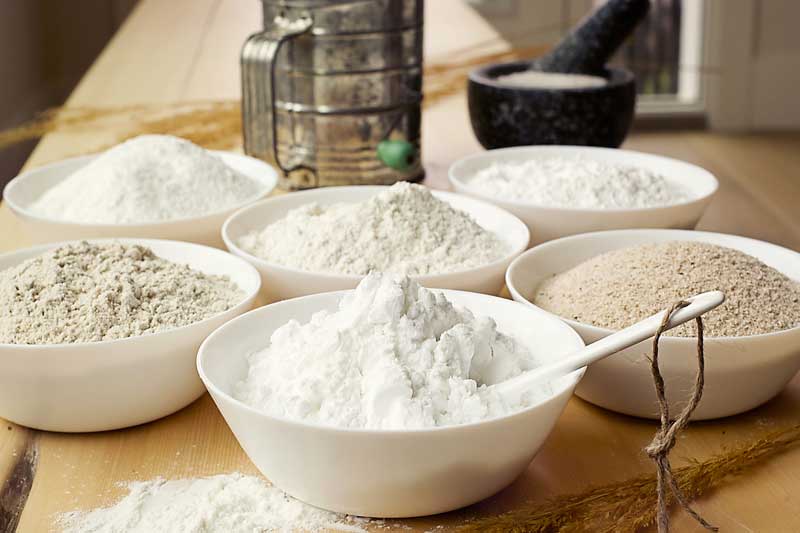
With a lovely blend of Gluten-Free Flours & Starches you absolutely can create an endless list of incredible Gluten-Free dishes without anyone being the wiser! It requires only very simple math and a kitchen scale. Trust me, it is TOTALLY worth the investment as you’re going to love how easy it is to enjoy ALL of your family favourites! So let’s get straight to it shall we?
You’ll LOVE this post if:
- You miss your favourite family recipes & need help to make them Gluten-Free.
- You need to adapt a GLUTEN FREE FLOUR for your specific dietary needs!
- You would like to cook for someone who is Gluten-Free.
- You’re looking for a fantastic recipe to make your own Gluten-Free Flour Blend.
- You want to find a fantastic but easy substitute for wheat flours in your recipes.
- All of this Gluten-Free stuff overwhelms you.
Learn more about: HOW TO CREATE YOUR OWN GLUTEN FREE FLOUR BLEND!
I created an entire post dedicated to the how & why of creating your own gluten free flour blend. Want to dive deep and really make delicious gluten free bakes? Then check out my post here.
Just need to make my Crazy Good Gluten Free All-Purpose Flour Blend and get on with it? Then read on!
My Crazy Good Gluten-Free All-Purpose Flour Blend
Check out this 40 sec how to video:
Ingredients in my Crazy Good Gluten-Free All-Purpose Flour Blend
BINDING FLOUR
Sweet Rice Flour is not the same thing as White Rice Flour. The only similarity they have is that they are both made from rice, albeit totally different types of rice. You can NOT substitute, as sadly they are not interchangeable. Sweet Rice Flour is made from glutinous (sticky glue like texture- not made from gluten!) rice & white rice is made from long and short grain white rice. Some even call it an indispensable ingredient in your gluten free kitchen! I couldn’t agree more! Sweet Rice Flour mimics gluten in gluten breads by giving the dough it’s stretchy, pliable properties. Sweet rice flour is readily found in Asian supermarkets, it can be labelled ‘glutinous rice flour’ or ‘mochiko flour’. But be sure to check the label as they are not always certified gluten-free. I prefer to make my own sweet rice flour! It is SO EASY! Give it a try with my easy videos! You can also find Bob’s Red Mill Sweet Rice Flour at many local grocery stores & organic markets like Blush Lane Organic Market here in Calgary where you can find my favourite brand by Blush Lane Organics.
STARCHES
- Potato Starch
Potato Starch is a starchy flour that helps bind and hold dough together. However, Potato Starch is NOT the same thing as Potato Flour. Potato starch is a natural way to increase the moisture of the dough as potato starch absorbs and holds liquid. You know when you soak potatoes before baking so that they are more crispy? Well, that’s kind of how potato starch is made. Crushed potatoes are soaked in water, then the starch that comes out of the water is dried and becomes the white starch known as Potato Starch. Potato Flour, on the other hand, is created by using the entire potato which is cooked, dried and then ground. You can find Potato Starch at most grocery stores in the organic/natural foods aisle. I use Bob’s Red Mill.
- Tapioca Flour (aka Tapioca Starch)
Like other starches, Tapioca Flour (aka Tapioca starch) is a very fine white powder that comes from the pulp of the cassava plant. It is not the same thing as cassava flour however, which is made from the entire root of the cassava plant. It is used to help create the chewy texture and crispy crust in our Momma’s Marvellous Montreal Style Bagels. You can find Tapioca Flour at most grocery stores in the organic/natural foods aisle.
WHOLE GRAIN FLOURS
Brown Rice Flour is made by finely grinding short grain brown rice. I prefer to make my own as it is SO easy and much much cheaper! However, if you prefer to buy it, I like Bob’s Red Mill Brown Rice Flour as it is stone ground to a very fine texture. It lends a nice light fluffiness and slightly nutty flavour to our bagels. You can also find Bob’s Red Mill Brown Rice Flour at most grocery stores in the organic/natural foods aisle. To make this flour superfine, I simply blend it in my high speed blender. It does the trick!
- Sorghum Flour
Sorghum Flour is unrelated to wheat and totally gluten free! It has a mild taste & smooth texture making it an excellent flour for breads. Sorghum flour originated in Africa and is still used in Indian & African cooking such as Jowar Roti (flat breads made with Sorghum Flour). I buy my Sorghum Flour at Blush Lane Organics in Calgary, but you can also find it at most grocery stores in the organic/natural foods aisle. I honestly usually make my own! My how to video is coming soon!
BINDING AGENT
- Psyllium Husk (my favourite)
Psyllium Husk is one of the KEY ingredients to making this Gluten-Free All-Purpose Flour so versatile! Please see my post (now here) on What are BINDING AGENTS and How to USE them. for more details on this incredible mix!
How to ADAPT Flours for specific allergens
I have broken down flours used in this recipe into 3 easy to understand parts. This way you can chose the flours out of each type and use them for this recipe. You need to make sure to CHOOSE AT LEAST 1 of the flours from EACH OF BINDING, WHOLE GRAIN & STARCHY flour groups in order to have success with this gluten free flour blend. If you can’t find an option that you can use, please contact me and I’ll gladly help you find another alternative ♡.
Whole Grain Flours
Whole grain flours are made from the entire grain including the outer bran layer (fibre) and both the endosperm (middle layer – starchy) and the germ layer (nutrient core). You can learn more about what makes a grain a “whole grain” in my post here or my video here. My favourite combo of whole grain flours is Sorghum + Brown Rice Flour, but feel free to use any combination of the below flours. In this recipe, whole grain flours make up 40% of the total flour weight. CHOOSE 2 of the below & use in close to a 50:50 ratio of the total whole grains:
My Favourite Whole Grain Flours:
- ⭐️ SORGHUM FLOUR: aka Jowar Flour is unrelated to wheat and totally gluten free! It has a mild taste & smooth texture making it an excellent flour for breads. Sorghum flour originated in Africa and is still used in Indian & African cooking such as Jowar Roti (flat breads made with Sorghum Flour). I buy my Sorghum Flour at Blush Lane Organics in Calgary, but you can also find it at most grocery stores in the organic/natural foods aisle. Jowar Flour can be found at Indian Grocery stores.
- ⭐️ BROWN RICE FLOUR: Brown Rice Flour is made by finely grinding short grain brown rice. I prefer to make my own brown rice flour! It is so quick and easy and saves you a TON of money! Give it a try! It lends a nice light fluffiness and slightly nutty flavour to our pizza crust. You can also find Bob’s Red Mill Brown Rice Flour at most grocery stores in the organic/natural foods aisle. If you prefer your brown rice flour superfine, simply blend it in a high speed blender. I find it does the trick!
- BUCKWHEAT FLOUR: Despite its very confusing name, buckwheat is not related to wheat and is naturally gluten free. Buckwheat is often referred to as a pseudo-grain as it looks and acts like a grain but in actuality it is a seed. Buckwheat seeds (aka grouts) are ground to a fine powder to make this lovely flour.
- MILLET FLOUR: Millet is a grain has been used for centuries in cooking. It has a lovely, light, neutral flavour & is packed full of nutrients & fibre. Millet flour will lend a cake type of crumb to baked goods so if you chose to use this flour, make sure to combine it with another whole grain.
- TEFF FLOUR: Teff is a small cereal grain that derives from the plant “Eragrostis tef”. These grains have a great nutrient profile & a mild nutty, molasses flavour. Teff is a very popular grain grown in Africa where it is used to prepare injera, a fermented sourdough bread.
- SUBSTITUTES: If you can’t consume any of the above flours, there are other gluten free whole grains you may want to try. However, I have not tested these flours. Please let me know if you do!
- Amaranth
- Quinoa Flour
Starchy Flours
All starchy flours also have some binding properties, however, I have found the above options to give me more success in binding which is why I separate binding and starchy. Adding starches allows the dough to absorb more water which helps bind the dough. Gluten free flours are missing the moisture retention abilities that gluten containing flours have. In this recipe starchy flours make up 35% of the total flour weight.
Having more than one starch allows for a more complex flavour & better rise as each has different properties. This is why I always use a mix of a few different starches to add up to the same total weight. Combine 2 of the following (or at least 1):
My Favourite Starchy Flours:
- ⭐️ TAPIOCA STARCH (aka tapioca flour): is a very fine white powder that comes from the pulp of the cassava plant. It is not the same thing as cassava flour, however, which is made from the entire root of the cassava plant. Adding starches allows the dough to absorb more water which helps bind the dough. Gluten free flours are missing the moisture retention abilities that gluten containing flours have. You can find Tapioca Flour at most grocery stores in the organic/natural foods aisle.
- ⭐️ POTATO STARCH: is a starchy flour that helps bind and hold dough together. However, Potato Starch is NOT the same thing as Potato Flour. Potato starch is a natural way to increase the moisture of the dough as potato starch absorbs and holds liquid. You know when you soak potatoes before baking so that they are more crispy? Well, that’s kind of how potato starch is made. Crushed potatoes are soaked in water, then the starch that comes out of the water is dried and becomes the white starch known as Potato Starch. Potato Flour, on the other hand, is created by using the entire potato which is cooked, dried and then ground. You can find Potato Starch at most grocery stores in the organic/natural foods aisle. I use Bob’s Red Mill.
- ARROWROOT POWDER: is a starch which is made from the root of the arrowroot plant. It is easily digestible, gluten free and has a very neutral flavour. I find it doesn’t bind quite as well as tapioca & potato starch but it is a great alternative!
Binding Flours
A binding flour is a term I made up to cover all flours that have the most binding power and can help hold the dough together. In my recipe, the binding flours make up 25% of the total flour weight. Many different flours have this ability but I use the following and have tested them in this recipe. Choose at least 1 of the below :
My Favourite Binding Flours:
- ⭐️ SWEET RICE FLOUR: my 1st choice for this recipe, is not the same as white rice flour and unfortunately they are not interchangeable. Sweet rice flour is made from sticky glutinous rice (glutinous meaning sticky! It does NOT contain gluten). It has a high starch content which allows it to absorb water and act like a glue. Hence, my binding flour label. It is not sweet like its name, but it is commonly used to make desserts. You can find it in most grocery stores in the asian aisle as mochiko or glutinous rice flour or in the natural food aisle. Be mindful that not all of the brands are guaranteed to be gluten free!
- OAT FLOUR: is made with very finely ground oats. You can easily grind your own but the finer they are ground the more fluffy your dough will be.
- CASSAVA FLOUR: is made from the whole root of the cassava plant & is high in resistant starch. It acts like a glue when wet and helps bind the ingredients together. It is not the same thing as tapioca starch (aka flour) which is made from just the starch of the cassava root. Cassava flour has much more dietary fibre than Tapioca Starch & they can’t be used interchangeably.
*Remember you still need to add a BINDING AGENT to this flour blend even though you use a “binding flour”.
Always add a BINDING AGENT to your Gluten-Free Flour Blend!
ALWAYS make sure to use a BINDING AGENT to help mimic Gluten! I never add the binder to my Gluten-Free Flour Blend until I’m about to use it. WHY you ask? I’ve found that different BINDERS work better for different purposes. Adding your binder when you are ready to bake allows you the freedom to chose which one is best for each of your recipes!
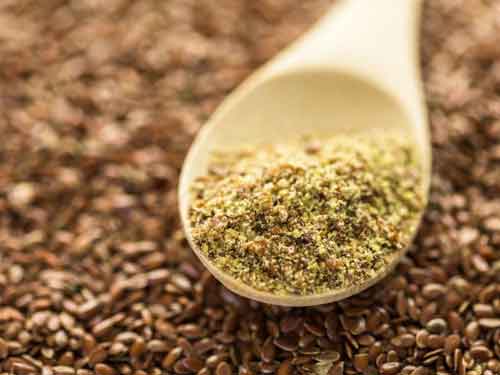
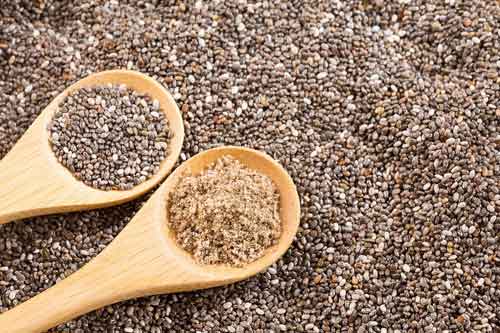
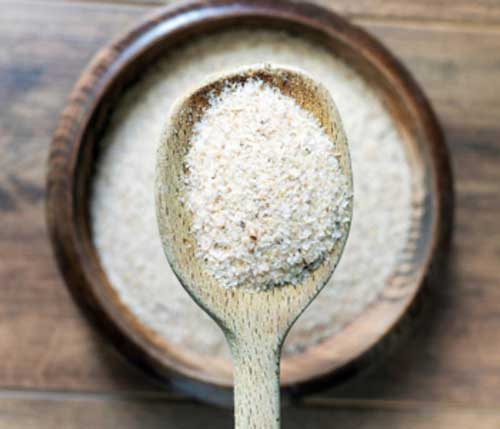
See my post How to make almost ANY recipe Gluten-Free in 3-Simple Steps AND my post on What are BINDING AGENTS & how to use them in Gluten-Free Cooking to find out more about BINDING AGENTS and how to use them!
When creating a gluten-free flour mix, the binding agent plays a crucial role in mimicking the elasticity and structure that gluten provides. The amount of binding agent you should add depends on the type of flour blend and the specific binding agent you’re using. Here are some general guidelines:
My favourite Binding Agents and Their Suggested Quantities;
- Psyllium Husk Powder:
- For bread: Use about 1 tablespoon per cup of gluten-free flour.
- For cakes, muffins, and quick breads: Use about 1 teaspoon per cup of gluten-free flour.
- For cookies and bars: Use about 1/2 teaspoon per cup of gluten-free flour.
- Chia Seeds or Flaxseeds (Ground and mixed with water):
- For bread: Use 1 tablespoon of ground chia or flaxseeds mixed with 2.5 tablespoons of water (let it sit for a few minutes to form a gel) per cup of gluten-free flour.
- For cakes, muffins, and quick breads: Use 1/2 tablespoon of ground chia or flaxseeds mixed with 1.5 tablespoons of water per cup of gluten-free flour.
- For cookies and bars: Use 1/2 tablespoon of ground chia or flaxseeds mixed with 1.5 tablespoons of water per cup of gluten-free flour.
For each cup of this flour mix, you would then add the appropriate amount of binding agent based on the type of recipe you are making (e.g., bread, cake, cookies).
Tips for Success
- Test and Adjust: Different recipes may require slight adjustments, so don’t be afraid to experiment and tweak the amount of binding agent as needed.
- Mix Thoroughly: Ensure the binding agent is evenly distributed throughout the flour mix to avoid uneven textures.
- Storage: Store your gluten-free flour mix in an airtight container to maintain freshness.
By using the right amount of binding agent, you’ll create gluten-free baked goods with better texture and structure, making them more enjoyable to eat.
Frequently Asked Questions
Do I really need to weigh the ingredients?
Yes! I have learn’t through experience that weighing ingredients using a scale whilst baking is super important and will allow you to reproduce great results every time! I’ve attempted measuring out the flours by volume (e.g. cups), then double checked the weights of each. They were off by quite a lot actually! It can mean the difference between the most incredible and beautiful looking bagel, to one that quite literally flops. The density of the ingredient makes a BIG difference in the volume of the flour. A new bag of flour may be packed down tight vs an already opened one. A gram will always be a gram of flour!
A KITCHEN SCALE IS WORTH THE INVESTMENT!
I use a very simple mini digital kitchen scale that I got for $19.99. Trust me it is well worth the investment! It is super easy to measure ingredients by weight. I think it’s WAY easier than measuring by volume (e.g. cups). To measure flour, place a bowl on the scale, press the tare button to zero your scale to the weight of the bowl, and then add your flour. Simple as that!
But what if I’m allergic to one of the flours in this blend? Can I substitute?
Gluten-Free flours can be confusing to say the least! Check out the post above where I’ll and help you uncover the mystery of it all! That way if you’d like to experiment with different gluten free flours and starches you have laying around you can! Or if you have an intolerance to one of the flours I use in this recipe, you’ll be able to calculate exact ratios of a substitute flour or starch. Not all Gluten-Free Starches and Flours have the same flavours, protein content etc.
But how did you decide on the ratios of each flour?
Each of the flours and starches I used in this recipe have different properties, flavours and bring something different to your bake. With practice, you’ll be able to play around with the different percentages of each of the whole grain and starches that make up the 60:40 ratio (starches : whole grains). Check out my post here to learn more!
Why can’t I use just one type of Gluten-Free Flour? Why a BLEND?
If you try and use simply one Gluten-Free Flour without a binder, you’ll sadly be quite disappointed. Trust me, I’ve tried! There’s no one flour or binder that can do it all! Georgina, from “The Larder” explains if we use just one we may find:
- Sweet rice flour – too stodgy
- White rice flour – too grainy
- Coconut flour – too dry
- Oat flour – too crumbly
- Almond flour – too dense
I have found that using one flour just doesn’t mimic the properties of gluten nearly enough to have success. Therefore, a combination of flours and starches that mimic gluten as closely as possible are preferred.

ENJOY!
I am just so excited to share this How to Gluten-Free Series with you all! My hope is that this series will help make your cooking and baking experience easier in some way. From my Canadian World Kitchen to your World Kitchen, where ever you call home, I wish you much love in your journey.
If you’ve enjoyed this series so far, please share it with your loved ones or better yet, PIN it to your Pinterest page. I’d love it if you followed me with the links below 🙏🏻
Much love and hugs,


Crazy Good Gluten Free All-Purpose Flour Blend
Equipment Needed
INGREDIENTS
- 250 g Sweet Rice Flour (aka Glutinous or sticky rice flour)
- 200 g Potato Starch I use Bob's Red Mill brand
- 150 g Tapioca Flour (aka Tapioca Starch) I use Bob's Red Mill brand
- 200 g Brown Rice Flour I use Bob's Red Mill brand
- 200 g Sorghum Flour I use Blush Lane Organics brand
INSTRUCTIONS
- Weigh out individual Flours & Starches.
- Sift together.
- *Store in an air-tight container & use within 3 months.
- **When ready to bake, make sure to ADD a BINDER & KEY ingredients!

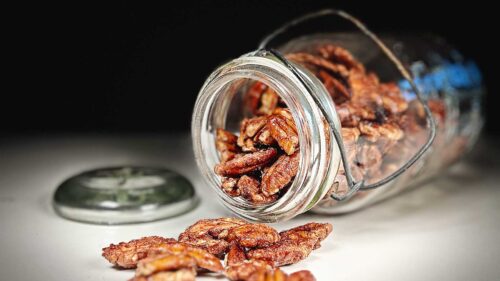
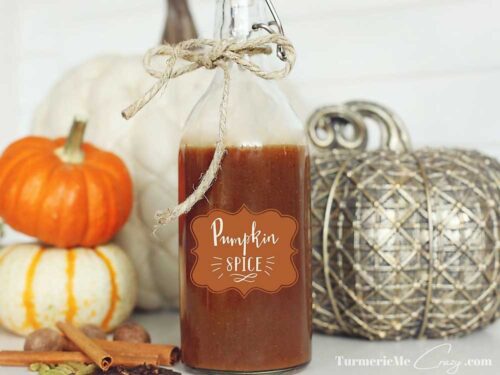
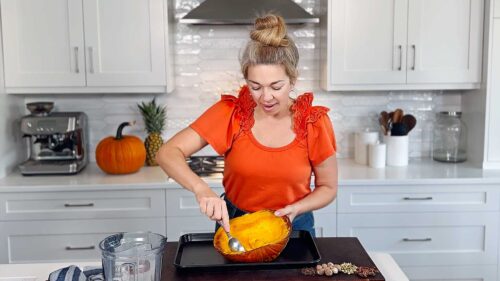
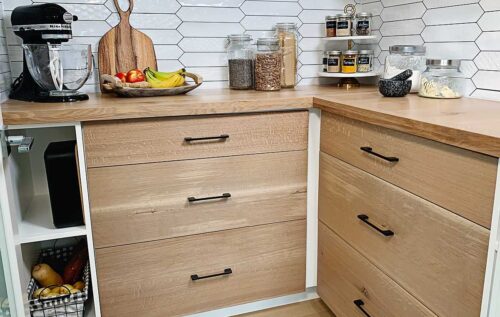
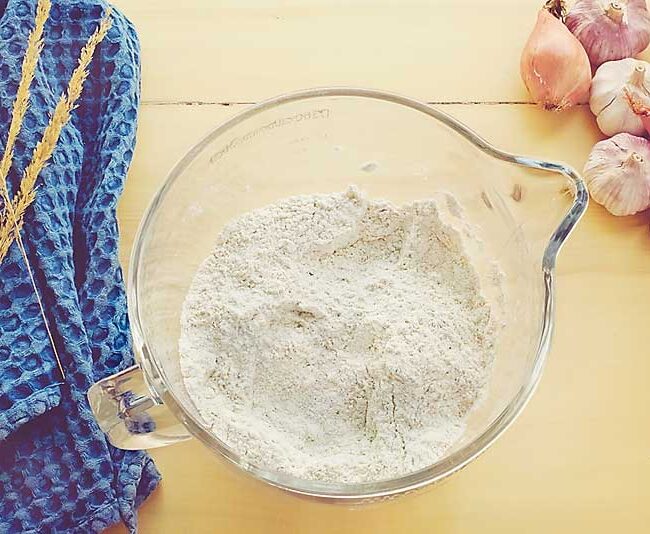



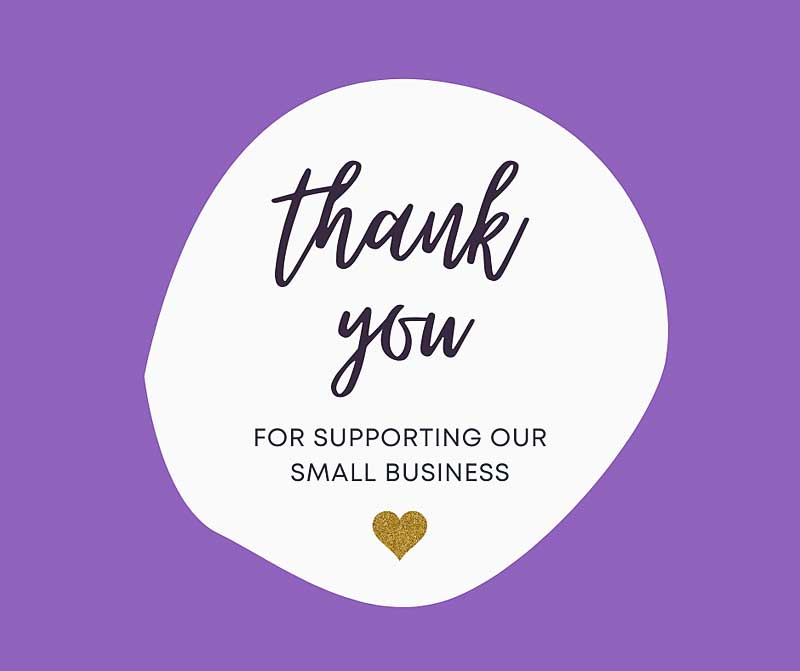

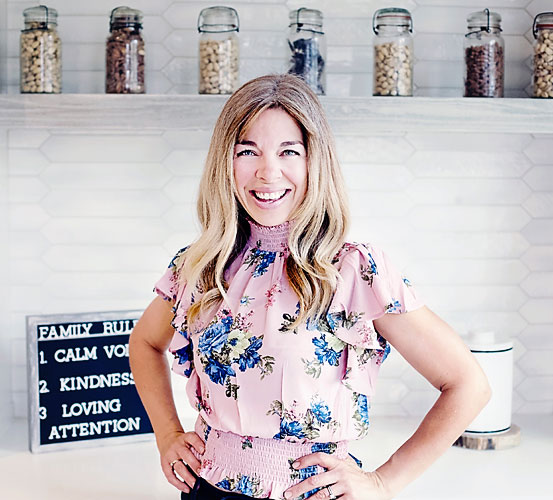
4 Responses
Love this mix in all my baking!!
Thank you Sarah! I am thrilled that you love it ♡.
I love this blend! Make it weekly!
I’m so happy to hear this Shanley! Thank you kindly for your comment 💜.